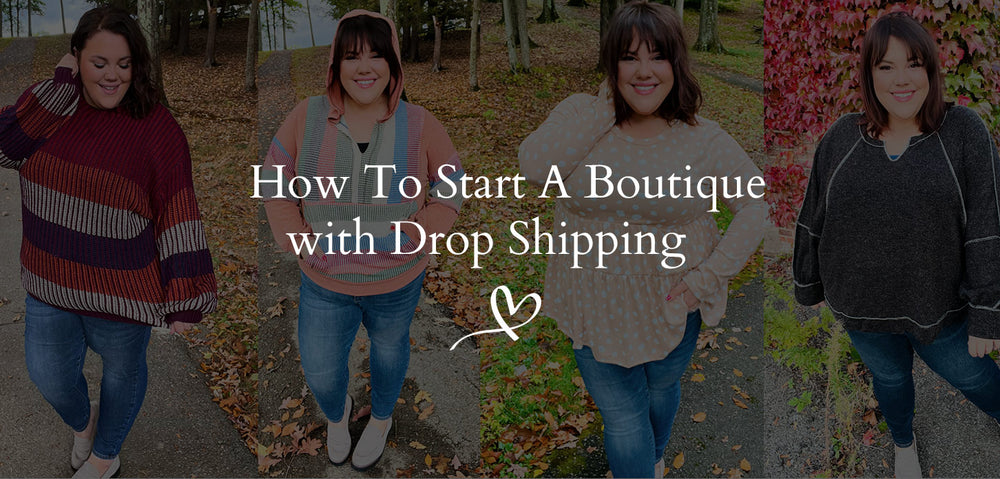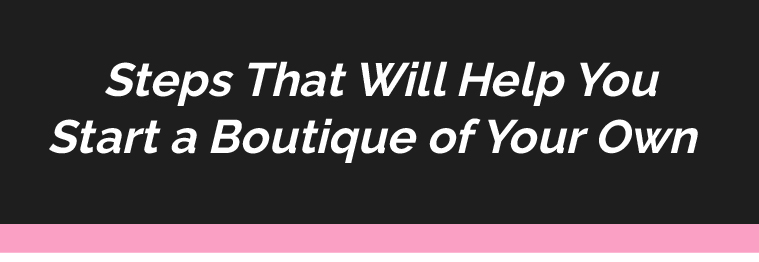Are you an aspiring entrepreneur with a passion for fashion, an eye for style, and a dream of running your own boutique? Starting a boutique can be an exciting and rewarding venture, but it can also be challenging in these weathering economic times. That's where drop shipping comes in. This business model allows you to sell products without the costs and the hassle of stocking and shipping them yourself. In this blog, we'll guide you through the process of starting a boutique with drop shipping, from the initial planning stages to growing your business and finding success.
Step 1: Market Research and Niche Selection
The first and most crucial step in starting a boutique with drop shipping is to conduct thorough market research and select a niche. Your niche should reflect your personal interests, expertise, and the preferences of your target audience. Consider factors like trends, competition, and target demographics. Ask yourself these questions:
- What type of products are in demand in the market?
- Who is your ideal customer, and what are their preferences?
- What's the level of competition in your chosen niche?
Your goal is to find a balance between a niche you are passionate about and one that has a viable market with a reasonable level of demand and competition.
Step 2: Business Plan and Legal Requirements
Once you've identified your niche, it's time to create a comprehensive business plan. This plan should outline your boutique's goals, financial projections, marketing strategy, and operational details. It will serve as a roadmap for your business.
You'll also need to consider the legal requirements for starting your boutique, which may vary depending on your location. Register your business, obtain the necessary licenses and permits, and familiarize yourself with local tax regulations. Setting up a legal structure (e.g., sole proprietorship, LLC, or corporation) is crucial for protecting your personal assets.
Step 3: Find Reliable Suppliers and Establish Relationships
The heart of your drop shipping boutique is your suppliers. Finding reliable and reputable suppliers is essential to ensure the quality of the products you offer and the reliability of your business. You can source products from various suppliers, including wholesalers, manufacturers, and drop shipping companies. Do thorough research and reach out to potential suppliers to establish relationships.
Here are some tips for finding the right suppliers:
- Check product quality: Request samples to assess product quality and ensure it meets your standards.
- Evaluate shipping times: Ask about shipping times and policies to provide accurate delivery estimates to your customers.
- Negotiate terms: Discuss pricing, minimum order quantities, and return policies.
- Check for drop shipping compatibility: Ensure that your chosen suppliers support drop shipping and can provide you with product data feeds for easy integration into your online store.
There are a solid dozen drop shippers but here are my top 3:
Step 4: Create an E-commerce Store
To sell your products online, you need a user-friendly and appealing e-commerce website. There are several platforms available to build your online store, with Shopify, WooCommerce, and BigCommerce being popular options. Choose a platform that suits your needs and budget.
When setting up your online store, focus on the following aspects:
- Professional design: Create a visually appealing and easy-to-navigate website that reflects your brand.
- Product descriptions: Write compelling product descriptions that highlight the features and benefits of each item.
- High-quality images: Use high-resolution images of the products to provide customers with a clear view of what they're buying.
- Secure payment options: Offer secure payment methods to instill trust in your customers.
- SEO optimization: Implement on-page SEO techniques to improve your website's visibility in search engines.
Step 5: Market Your Boutique
Marketing is a crucial element in the success of your drop shipping boutique. Utilize a combination of digital marketing strategies to attract and retain customers. Some effective marketing methods include:
- Social media marketing: Create profiles on platforms like Facebook, Instagram, and Pinterest to showcase your products, engage with customers, and run targeted ad campaigns.
- Content marketing: Publish blog posts, videos, and other valuable content related to your niche to attract organic traffic to your website.
- Email marketing: Build and segment your email list to send personalized offers and updates to your customers.
- Influencer marketing: Collaborate with influencers in your niche to reach a wider audience.
- Search engine optimization (SEO): Optimize your website for search engines to improve its ranking in search results.
Remember that effective marketing requires consistent effort and a deep understanding of your target audience's preferences and behavior.
Step 6: Handle Customer Service and Orders
As you start receiving orders, it's essential to provide excellent customer service to build a positive reputation. Ensure prompt and courteous communication with customers, address any concerns or inquiries, and keep them informed about their order status.
Manage orders efficiently by regularly updating your product listings, stock levels, and prices. You can automate some of these tasks using e-commerce tools and plugins.
Step 7: Monitor and Optimize Your Operations
Keep a close eye on your boutique's performance by tracking key metrics, such as sales, website traffic, conversion rates, and customer feedback. Use this data to make informed decisions and continually optimize your operations.
Consider the following strategies to improve your boutique's efficiency and profitability:
- Expand your product range: Identify popular products in your niche and expand your inventory to meet customer demand.
- Price optimization: Regularly review your pricing strategy to stay competitive while maintaining a healthy profit margin.
- Customer retention: Implement loyalty programs and engage with repeat customers to foster long-term relationships.
- Shipping options: Offer various shipping options, including expedited and international shipping, to cater to a broader audience.
Step 8: Scale Your Business
Once your boutique is running smoothly and generating consistent revenue, you can focus on scaling your business. This might involve expanding into new niches, targeting international markets, or exploring additional sales channels like Amazon or eBay. Be prepared to invest in marketing and customer support as your business grows.
Conclusion
Starting a boutique with drop shipping can be a lucrative and fulfilling business endeavor. It allows you to turn your passion for fashion and style into a thriving online store without the headaches of managing inventory and shipping logistics. However, success in this venture requires careful planning, dedication, and a commitment to continuously improving your operations and customer service. With the right niche, reliable suppliers, and effective marketing strategies, you can turn your dream of owning a boutique into a reality and make your mark in the world of e-commerce. So, go ahead, and take the first step towards your dream boutique today!


















































